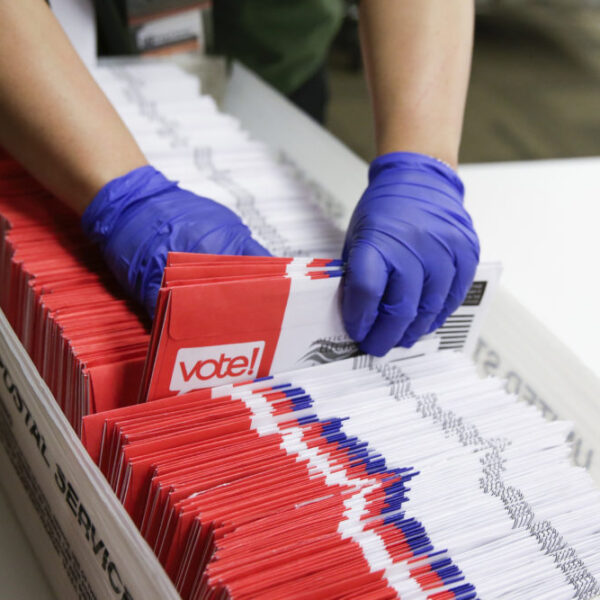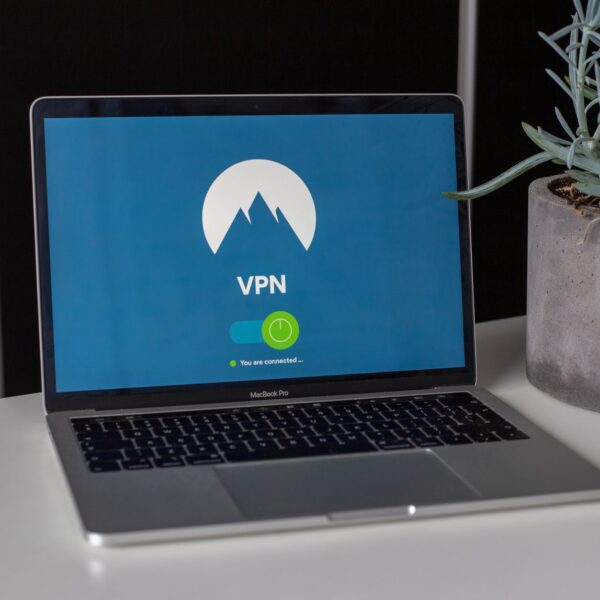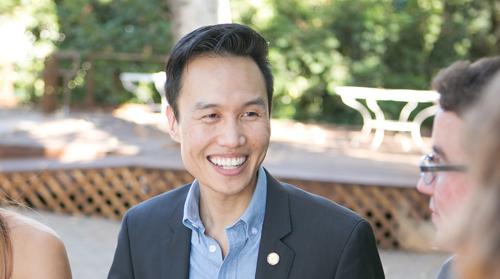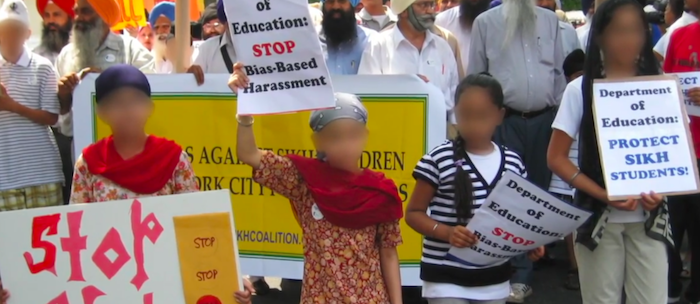Ethnic Media Services recently held a special workshop and disinformation update with Cameron Hickey, CEO of the National Conference on Citizenship (NCoC). An expert in misinformation and its effects on democracy, and one of the nation’s leading experts in this field. Pilar Marrero associate editor of ethnic Media Services moderated the briefing.
Digital media monitoring, including on in-language social media platforms, is a critical component to understanding disinformation narratives that are spreading and enabling trusted experts and media outlets to respond to false claims in a timely and effective manner. Cameron Hickey shares the latest findings of his team of in-language media monitors and helps reporters know what to look for particularly about Covid-19, vaccines and boosters, treatments, and related public health issues. Cameron has served as the Director of the Algorithmic Transparency Institute, a current project of NCoC, for the past 3 years. His expertise in the analysis of misinformation has led to the development of groundbreaking tools like Junkipedia and the establishment of the people-powered misinformation monitoring program, the Civic Listening Corps. Prior to joining NCoC, Hickey helped lead the Shorenstein Center’s Information Disorder Lab at the Harvard Kennedy School to monitor mis- and disinformation in the 2018 midterm elections. Cameron is an Emmy-Award winner with work appearing on PBS NewsHour, Nova, Bill Moyers, and The New York Times
Cameron acknowledged his colleague Caitlin Dowling who led the work as a senior analyst at ATI over the last year and a half in particular focused on these issues. One of the key things that have been done until the end of last year produced a series of briefings based on these same kinds of insights for the office of the Surgeon General to inform their work in terms of outreach and priorities.
We all understand that viral misinformation is contagious and dangerous. It is in some cases as problematic as some of the actual viruses that are spreading in that it can instigate people to make very poor decisions that can put their health at risk.
We think about mis- and disinformation in ways that are very similar to the ways that we think about the spread of viruses. In fact, when the pandemic first emerged back in 2020 the World Health Organization also noted that we were experiencing an infodemic a massive spread of missing dis-information.
Rumors, lies, and just misunderstandings spread in ways that are very similar to these viruses. They are contagious, they go from one person to another, they evolve and they mutate as they spread across our information ecosystem. And so recognizing that they bear these same traits is really important as we move to think about how we try and understand them and eventually tackle them and mitigate their impact.
It’s important to recognize that the problematic messages that we see on and here online have many different forms. Sometimes we will call them misinformation, sometimes we will call them disinformation. Sometimes we call them rumors, conspiracies, and even hate speech is problematic content, junk news and that’s not totally false. But still not healthy for you just like junk food. All of these are different forms of the kind of stuff that we’re concerned about but it’s important just to remember that the distinctions between them aren’t as important as the fact that whatever form, it’s going to mislead us and we need to address it. So we often talk about the difference between misinformation and disinformation as being a difference between things that are false and things that are spread with the intent to deceive people. I would like to know that while we care about the intent it often becomes irrelevant. If people are misled whether they were or were not done so intentionally can be beside the point. So when we think about the kinds of rumors that are spreading and what things we can do to address them, let’s focus on the point that all of it is misleading.
So I want to talk broadly about the kinds of Miss and disinformation that we tend to see that we care about we call this large bucket of problematic content. And we do that because not everything is false. Even if it is problematic. So there are a lot of clues to look at when we’re talking about information spreading on social media, the rhetoric coming from influencers even sometimes from public officials and they fall into a few obvious categories. Things that are about fear and manipulation when people are elevating content using messages that are designed to be scary or angry to get you to change your behavior. That’s a clue that we should be suspicious about them. Some things actually are scary and we should be upset about them, but frequently think fear-mongering is a tactic that is used to amplify mis- and disinformation. So we should always be careful about it.
We frequently see conspiracy theories come in many forms. They were not quite so mainstream several years ago, and now they are incredibly mainstream. It’s important to note that usually conspiracy theories reference an important boogeyman with an ulterior motive, some powerful actor who is bad and alleging some motivation behind what they are doing.
We also see things that maybe seem mundane like things that are missing context. So there may be information that on the surface is technically true but when shared without the proper context can be incredibly misleading. This comes in a wide range of forms, and you can imagine that when a statistic is shared on the internet, but we don’t know for example, what part of the whole that statistic represents then that might be a much scarier statistic than the reality is in the end and there are some examples of that that in terms of Public Health
Pseudoscience, things like unproven cures for covid-19, things that draw together things that aren’t actually based on sound research or medical science or coming from trusted authoritative sources, spread quite a lot on the internet and are off as soon as you see things that have the hallmarks of that. It’s another clue to be skeptical including your hate and dog whistles. Any time messages even allude to concepts that are about identity, they serve to divide, and play on stereotypes. Even if it’s not overt hate speech these kinds of messages are often problematic ones that lead to misunderstandings, and misinformation and our sources who use this kind of language are often also the sources of other forms of mis and disinformation.
Faulty logic:
They are frequent arguments that while can’t be proven to be false aren’t necessarily exactly true, either. They often come in the form of what we call logical fallacies. A good example of that is a false equivalence argument when you are comparing things and making the implication that if this is true, then that should also be true because they’re similar, but when they aren’t actually similar, when you’re comparing apples to oranges then the underlying argument is no longer valid, right?
Finally, something that we see often and this is particularly important in the ever-changing world of Public Health, is information content that is old might have been true the day it was published, the day it was originally shared but when it gets reshared today, it may no longer be the case. We see this across the Spectrum. It can often happen when a multi-year-old news article or piece of research is shared but it can also be the case when it’s an image. I’m sure you all remember images that we’ve seen in the context of the fight over immigration, that the US border they’re often our images that are shared one day when they were true in one context and then when they’re shared again in the context of a different part of that long struggle are no longer relevant and can in fact be misleading but overall the point here is what we have written down here at the bottom. It does not have to be false to be a problem and it’s important to keep that in mind as we think about how to respond how to craft high-quality journalism in response to the kinds of problematic ideas that we see, so talking about several key health-specific themes that are recent and relevant, review them briefly now and then we’ll talk about each of them in more detail one by one. So the first key theme is a theme that has been reappearing that we’re titling sudden death. There are a wide variety of claims in particular when it comes to high profile deaths, deaths of celebrities to claim that now we’re seeing a rise in such quote-unquote sudden death and the allegation being that the covid-19 vaccine caused those sudden deaths. There is no evidence of that nonetheless because high-profile people have died recently people are attaching themselves to this new sort of theme and misinformation.
Another key theme is the concept of excess deaths. So there is science there is data showing that a higher than the average number of people are dying compared to moments in the past. And the idea that there is misinformation here is that this factual information is being recontextualized to suggest that those increases in deaths are the result of covid-19 vaccines. There is no evidence to link those two things together and there is evidence connecting many other reasons for increases in deaths compared to previous moments in time. Nonetheless, the existence of excess deaths is something that folks who are anxious and concerned about covid-19 vaccines latch onto and use as a way to amplify their concerns about the vaccine.
The next item here is vaccine detox. These have been in particular popular within Chinese language communities, the false idea that harmful vaccine ingredients can be something that you can remove from your body by using herbs and supplements. So the idea is that you’ve got bad stuff in your body because of the vaccine and here are some illegitimate ways to get rid of it. So there are two different problems here, one that this stuff that’s in your body is problematic and you need to get rid of it, and two that these sort of false cures and snake oil are actually gonna accomplish that.
The next item is climate lockdowns. The idea here basically is that there’s a misunderstanding that certain actions being taken in certain cities are in effect an effort to limit our ability to move and that those are responses to concerns around climate change.
Gas Stoves:
Another item here is and I’m sure you’ve all heard some of these health risks related to gas stoves. There was recent data about natural gas stoves causing increases in asthma and other health risks and in reaction to that we’re seeing the risk of mis/ disinformation about that spreading often for political reasons. And then concerns about bird flu the h5n1 virus as we are seeing increased cases and you risk this is what we would call like an on our radar threat. It has not emerged yet as a significant problem, but given what we know and what we’ve seen in the past. This is one that’s likely to become a bigger issue in the future and represents a great opportunity for journalism to intercede now to do a better job of putting out good high quality
information so that later when mis/disinformation starts to emerge, people are already inoculated against the mis/disinformation because they have been given good information about that.
Let’s dive in with the specifics.
Sudden death
It has been one of the most popular vaccine narratives that spread in English. It’s spreading in Spanish spreading in Chinese. There is a junk documentary that emerged recently called, ‘died suddenly’ that is exploiting families who have lost loved ones suddenly due to other reasons and they’re now turning to blame vaccines as the reason for the loss of their loved ones. What we know is that there have been many high-profile deaths and that those high-profile deaths don’t have anything to do with vaccines. But each time we experience one of those and it is kept, captures people’s attention that people will be drawn to this misleading narrative. There are various claims. You can see here on the screen claims that you know, a man died hours after vaccination in Chinese a telegram post that claims that high mortality rates are pointing to a depopulation agenda, various posts that claim that you know diamond from diamond and silk and Damar Hamlin who did not die have died from the vaccine.
It’s important to note that there are legitimate reasons why death rates are soaring.
Excess deaths.
So excess deaths are defined by the CDC as the difference between the observed numbers of deaths that we have in society in a specific time period and our expectations based on historical data and what we would assume we would see at a given time period. We know that it is a fact that excess deaths have increased in many places. It turns out that vaccine activists are claiming that excess deaths are driven by what we just talked about sudden deaths from vaccines or other long-tail vaccine side effects. There are many concerns that the vaccines were released originally in order to reduce the population. And so looking now and seeing these excess deaths further drives people to believe that false Theory. What we do know, the excellent information that we do know is that since the pandemic started many people postponed important health care, right? We are now seeing the ripple effects of that right in the United Kingdom new prescriptions for blood pressure medication fell in 2020 and 2021 because people weren’t being screened for high blood pressure. That lack of treatment is coming back to hurt us. So more people are dying today from conditions that they did not get diagnosed with and did not get treatment for. Telegram posts in Spanish that have stats about mortality that are out of context that come from Australia that argue that the excess deaths are driven by the covid vaccine. We’ve got a TikTok spread showing a Mexican Doctor Who claims that 40 Years of research shows that mRNA vaccine should not be used because it causes high mortality rates. We have a WeChat message in Chinese here that quotes an insurance expert in quotes.
A covid conspiracy theorist claims that high excess death rates correlate with high covid vaccination rates. So people are taking this fact that we see connecting it to the things they believe or fear and then amplifying it across social media. So what you can see here is, it’s important particularly to be drawn to these two posts that are the BBC News posts. So that’s an accurate news article from a legitimate news source, but when it gets shared with this additional context vaccine or something else or it’s only a coincidence suddenly people are questioning the underlying news story and they are using a legitimate trustworthy news source as essentially the evidence.
Vaccine detox. People are claiming that the covid vaccine contains harmful ingredients right? There have been many claims over the last almost two and a half years about the things that might be inside the covid-19 vaccine. People look at the ingredients and misinterpret the words used for those ingredients people believe there are things that just aren’t in there at all and that they communicate. And so the claim is that these harmful ingredients can be removed using detox programs like you would do a juice cleanse or something else.
So they reference a variety of things, herbs, supplements, and other types of cures for detoxing from heavy metals. For example, these aren’t necessarily harmful things to take, herbs and supplements, but they won’t do anything to actually detox the body from things that they’re referencing because those things aren’t actually in the vaccines in the first place. It’s important to note that this theme links to something that we see often in our disinformation research, which is that folks often use sensational concerning or exciting things to amplify problematic or misleading messages in service of making money, so these messages about these detox cures serve the interest of the people who are selling detox cures. And so when we see messages that link health concerns with the possibility of someone selling something we need to be concerned. We need to be particularly skeptical of those things and we need to call it out. So when people are reporting these things we need to really point out that these messages are connected to the commercial retail of vitamin supplements. Most of us at this point are familiar with some of the most prolific purveyors of missing disinformation online, the most notable name there being Alex Jones. Alex Jones and his media Empire are incredibly wealthy because they sell vitamin supplements alongside their you know.
Politically charged mis/disinformation campaigns that they broadcast.
There are a variety of examples you can see coming from primarily Chinese language media, but you also see the marketing message that was associated with the recovery formula.
Climate lockdowns
There have been a number of reports that things are happening naturally in communities in this case what you’re seeing Illustrated here is a concept of the 15-minute City in the UK. So creating traffic-based restrictions is the true information.
They are attempting to create what’s referred to as a 15-minute city and what that really means is to create a community in which all of the things that you need are accessible to you within a 15-minute walk or bike ride. So things that you do not need to drive to get to, that are more accessible, livable city is enabled by or sort of test it out by creating barriers to using cars to make it more difficult to use cars and then promoting all of the things that you would do to try and make a community more livable making sure that there is a place to get groceries a place to get healthcare, a place to educate your children within 15 minutes of where you live.
This concept is being weaponized.
It’s being weaponized by folks who are concerned that the green movement is overreaching. There are concerns that we previously had lockdowns associated with covid-19 and that those original covid-19 lockdowns were not to stop the spread of covid-19. But we’re using it instead to control us and to control our lives. And so now that we do not have covid-19 lockdowns. This new idea of climate lockdowns is emerging as a new fear-mongering tactic and they’re using this concept of the 15-minute cities and the sort of traffic barriers that we’re seeing to amplify this new idea. They simply put the idea of the pandemics over. So what’s the next awful thing they’re going to do to us is what’s driving this kind of idea.
Talk about gas stoves. We are all familiar with the news story from probably three or four weeks ago that there was legitimate research that looks at the health risks of gas stoves in homes. The research showed that 12% of childhood asthma cases are driven by pollutants that are dispersed by gas stoves. This includes carbon monoxide.
In addition, the US consumer product safety commission said that they could move to regulate gas stoves if they can’t be made safe. They did not say that they will ban gas stoves. They said that if they couldn’t be made safe, they might need to regulate them. Just to reiterate, there are no plans to ban gas stoves at the federal level, but some municipalities have moved to limit the installation of new gas stoves in residences. So, gas stoves are not banned. It’s not going anywhere but in certain municipalities, it may be harder if not impossible to install new ones as opposed to electric.
But there is a movement that is very politically charged. It comes frequently from the right. It responds to climate risks and concerns around. Green overreach is now fear-mongering about a federal ban on gas stoves or making gas stoves illegal. We’ve even seen that in Florida Governor DeSantis has removed the sales tax on gas stoves. So he’s taking actually a policy intervention in response to the sort of spread of Mis/ disinformation. So, this is a situation that like the original health concern turns into a politically weaponized tool that then amplifies propaganda. So as we think about how we cover this issue, which is a legitimate issue. It’s important to recognize that this is one of the risks and possible consequences.
H5n1.
There hasn’t been much mis/disinformation spreading on this yet. But there has been some new potential risk amplified by legitimate news coverage in the form of opinion from a trusted source the New York Times from us a trusted expert who has the headline and an even deadlier pandemic could be here soon. We will not judge this headline or this publication, but we can all read that and think for ourselves about whether or not that headline is doing our community the best service that it could compare to the risks and anxieties that it might produce and as we think about that, it’s important to think about how we might do our own reporting and what we share with folks as we think about the future of h5n1. There’s good news, right? We do have a vaccine for h5n1. It is not as easy to produce and there’s not as much of it as there has been for other diseases including the flu, including covid-19, but it is a considerably harder disease to infect humans with and we rarely see the human-to-human transmission. It doesn’t mean it’s not something that we should be concerned about but it is at a lower level of risk today. New and emerging new stories include what we’ve seen other mammals catch including otters and foxes is something that has emerged. There is coverage of it, but it still remains rare in addition, there are news stories about minks and mink farms where it may be spreading within those communities. This is not to say we should not be concerned about it, but we should be cautious about how we report about it and we should be careful to share facts and pay close attention to it as the situation changes. As we saw with covid-19 the facts on the ground can shift quickly and it’s important to be responsible and thoughtful and up-to-date as we think about how to cover.
There are these messages spreading that this is a major problem. It does not mean we can’t do anything about it. We all have a role to play in tackling this, as journalists in particular we have a front-line responsibility in educating the public and educating our communities.










